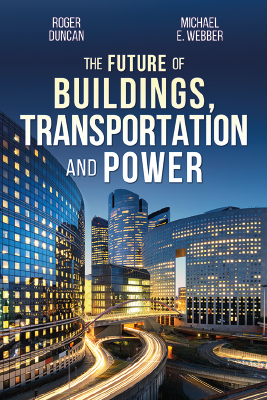By Roger Duncan and Michael E. Webber
The impact of the pandemic on construction in the future will most likely accelerate the role of robotics in construction and the evolution of buildings as health monitors and home offices.
CONSTRUCTION ROBOTS
First, the pandemic has emphasized the advantages of robots in such areas as deliveries and telehealth. This is an acceleration of an existing trend. Robots will become prevalent throughout the construction industry for building and operating our structures.
Though a rarity at present, it shouldn’t be long before we see robotic operation of most traditional construction equipment. Advantages include faster construction times, finer precision work, and greater
safety for human workers, but they also mean a replacement of muscle power with electrical power.
Robots have been developed for demolition work, conducting inspections, sorting construction waste, painting walls, finishing concrete floors, welding frames, and conducting layout and measurement tasks. There also exist trucks and heavy machinery on construction sites that can be remotely controlled.
The University of Sydney developed an automatic excavator that could eventually lead to the development of larger, robotic-operated construction equipment. Smaller construction robots are
already being used for specific building tasks. In Japan, the Kajima Company’s “Mighty Hand” robot lifts heavy concrete walls and other large materials. Takenaka’s Surf Robo automatically compacts concrete floors, and the WR mobile robot performs column-to-column welding operations.
Most robotic assistance occurs today in factories creating prefabricated building parts, such as insulation and windows, and their duties should expand over time. Specialized robotic systems in development will construct walls and take over other aspects of building construction. Baltimore’s Blueprint Robotics combine workers, robots, and machines to piece together walls and roof that arrive at the worksite already 60 percent assembled.
At the same time that advances in hardware are allowing robots to handle more on-site construction tasks, new software will automate entire construction processes. In the future, we will simply connect architects’ schematics to materials handlers and construction robots on-site, rather like ordering a pizza online with options for different toppings or other ingredients and special requirements.
BUILDINGS AS HEALTH MONITORS
What if your home could read your temperature and heart rate? Taking temperatures at many work sites have become routine and there are already experiments with devices that will automatically monitor a worker’s temperature when they arrive.
Future buildings will likely have the capacity to do this and a lot more. It’s anticipated that many homes, for instance, will act as health monitors. Motion sensors will monitor your location and alert healthcare responders if you’ve fallen. As our population ages, many families are retrofitting homes with motion detectors, sensors, alarms, and other devices to allow senior citizens to remain in their homes as long as possible. These smart homes can also arrange for transportation to visit friends, doctors, or stores, thus reducing isolation for the elderly and improving activity and therefore health.
Smart homes might be built with the most sophisticated health monitoring equipment, perhaps replete with a laboratory toilet. The lab toilet could analyze waste for diabetes, kidney disease, nutritional
deficiencies, and many other issues. Sensors in our refrigerators would alert us when foods spoil or chilled medicines expire. While such devices, along with health monitoring homes, may sound strange or
intrusive today, they’ll more than likely be a part of life in the near future.
Improved air filtration systems will likely result from the pandemic. We have already seen such an emphasis in aircraft, and future buildings may be designed with much more emphasis on indoor air quality, detection of air pollutants, and advanced filtration systems than today as a pandemic response.
In many ways, these on-site health sensors will be a form of distributed medicine. Just as we are moving away from far-flung, large-scale power plants to on-site power production, from large-scale water treatment plants to on-site water harvesting, and from largescale factories to on-site 3D printing, we may also reduce our use of large-scale health-care systems (e.g., hospitals) for on-site diagnosis and treatment. Hospitals could be reserved for specialized procedures that cannot be done at an outpatient facility.
Covid-19 has also facilitated a major work from home movement. Homes have usually been remodeled to accommodate offices, but a home office design may become a regular feature in the future, with integrated telework features. Indeed, the pandemic has generally challenged our built environment to become more flexible and responsive to new health and work requirements.
about the authors
Roger Duncan is a former research fellow at the Energy Institute at the University of Texas at Austin. He is the former general manager of Austin Energy, the municipal electric utility for Austin, Texas. Dr. Michael E. Webber serves as the chief science and technology officer at ENGIE, a global energy and infrastructure services company. Webber is also the Josey Centennial professor in Energy Resources at the University of Texas at Austin. For more about The Future of Buildings, Transportation and Power, visit www.thefutureofenergybook.com.



